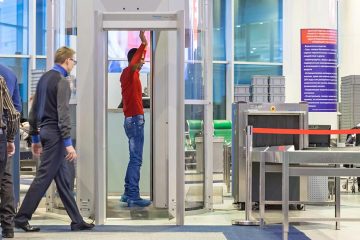Why Travelers Choose Uber When It Comes to Transportation Abroad
Uber Has Made Transportation Safer and Easier Than Ever
The meteoric rise of the app Uber has changed many things, including the way people travel. While taxis used to be accepted as a necessary evil, a rite of passage and often a test of your haggling skills, they are now bypassed completely for the sleek service provided by Uber (i.e. no arguing over the fare and sometimes free water and candies).
There is no doubt in most travelers’ minds that Uber offers an alternative mode of transport that is safer, cheaper and more comfortable than traditional taxis.
Active in more than 500 cities across the globe, using Uber internationally is becoming more and more viable and is quickly becoming the preferred form of private transport for travelers. The key to Uber’s success with travelers lies in a few select areas.
Price
A huge part of the popularity of Uber stems from the fact that fares are almost always less than or equal to traditional taxi fares. When you compare the standard of service you get between regular taxis and Uber, the value-for-money ratio is always better with Uber.
Not just for the customer service element: Uber’s cars have a reputation for being clean and modern (I have even ridden in an Uber that was so new there was still plastic on the seats).
Compare that to the state of taxis in many developing countries, where the vehicles often have suspicious stains on the seats, strange smells and no air conditioning. As a result, using Uber in another country is an attractive option for travelers.
Safety
As a woman traveling alone, I have lost count of the number of times I have been leered at and hit on by taxi drivers. I have had taxi drivers attempt to pull over in dark side streets, ask for my number, and wait and stare at me for long minutes after I have climbed out of the car.
I have also been scammed by taxi drivers demanding too much money, or fiddling with their meters. After so many frightening moments and bitter arguments over taxi fares, it is no question that I feel more comfortable and secure using Uber abroad.
Although Uber does still involve getting into a car with a complete stranger, there are solid safety measures. For solo travelers, you can assess the reviews of a driver before you get in their vehicle.
If they have anything less than four-and-a-half stars, you can simply bypass them and nab one with a perfect rating. This way, you can be assured that you will be safe and, presumably, not harassed during your trip.
Taxis are a complete gamble. Sure, I have had some lovely taxi drivers in my time, but some of them have also been the kind of men I wouldn’t want to cross on a dark street, let alone get into a car with.
In a new feature, friends and family can now track your Uber ride. Trip Tracker can notify people when you are getting into an Uber, and let them view the entire trip via a live map.
This can bring peace of mind to your family, no matter where in the world you happen to be.
There is also a very responsive customer care department you can contact should anything go wrong, or if you want to dispute a charge. On the one occasion an Uber driver tried to scam me by taking an excessively long route to my destination, I simply contacted their customer care via email and was refunded within 48 hours.
Convenience
Uber’s business model makes getting from A to B a stress-free experience. For example, you don’t have to juggle cash: all payment is deducted from the credit card you have registered under your Uber account.
This solves multiple problems in one genius move. As well as not having to worry about having cash on you, this means you don’t have to argue about the fare with your driver.
Taxi drivers are infamous for trying to squeeze money out of tourists, either by quoting inflated prices or by claiming not to have change for large bills.
With Uber, language also poses less of a barrier. If you don’t speak the local language, no problem. All communication can be done electronically, and there is none of the confusion of trying to communicate your destination.
Although Uber is tethered to WiFi, this is becoming almost a non-issue as WiFi hot-spots pop up in more and more public places. I have connected to WiFi on buses in Romania, parks in Panama and ferry terminals in the Philippines.
On top of that, if your phone is unlocked, it is straightforward to get a local sim card and access data networks in the country you are traveling in.
Having reinvented the way people can get around, Uber is fast becoming the dominant mode of transportation tourists use.
What happens if you miss your flight? Depending on the scenario, you may be able to book the next available flight free of charge. Here's what to expect.
The Pitfalls of Uber’s Takeover
Uber’s takeover hasn’t been without incident, however. Its impact on other modes of transportation is being felt, most severely by taxi drivers.
Taxi drivers have taken to the streets around the world to protest over the widespread use of Uber. The majority of these protests have been peaceful, but aggression is mounting as taxi drivers react to what they perceive as unfair competition.
I saw firsthand the bitter anger Uber has induced in taxi drivers. While living in Barranquilla, Colombia, I found myself caught up in a fraught incident involving striking taxi drivers.
Unaware of the taxi strike, a friend and I hopped in a cab and started the long trek through traffic to get home. We noticed Fuera Uber (Get Out Uber) scrawled on the rear windows of a few other taxis, but didn’t pay close attention.
Then our taxi suddenly went from being surrounded by other vehicles to surrounded by a mob of angry protesters, all large, belligerent men, who were taxi drivers striking in protest against Uber.
They were infuriated to see one of their own, our driver, breaking the strike and picking up passengers. Maddened by the lack of solidarity they swarmed the car.
We locked the doors and wound up the windows, but not quite fast enough. An egg was sent flying through one of the front windows, splattering all over the dashboard. The crowd pushed and rocked the car, shouting threats.
Our driver shouted right back, pressed the accelerator down and forced his way through the crowd.
We came out the other side, onto a clear street, but another motorist quickly signaled to us. Speaking rapidly to the driver, he warned that an even bigger mob waited ahead, and they might try and seize the passengers: meaning us.
Without hesitating, my friend and I dived from the taxi and quickly walked the rest of the way home.
I was shocked by the strength of the anger directed at Uber, but it’s hardly surprising. The ever-growing presence of Uber is a huge threat to business.
From the perspective of taxi drivers, Uber is a gross breach of fairness.
As of yet, Uber hasn’t changed the way taxis currently operate, but maybe in the future we will see a shift in the way traditional taxis function. If they can deliver the same ease and quality of service as Uber, then they might just survive.
Become an Uber Driver
Are your interested in becoming an Uber driver yourself? Sign up here!







